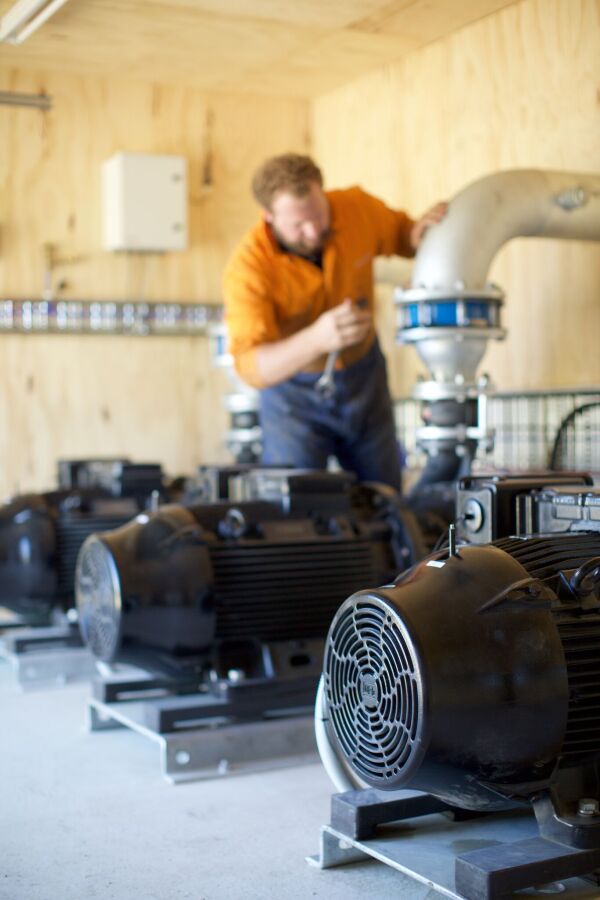Search Site

When you push the “start” button at the beginning of each irrigation season, you want your pumping stations to start – and continue running – without a fuss.
Unfortunately, there are pumps right across the country which require daily monitoring and frequently cut out.
The owners of Willowcliff dairy farm in Duntroon, North Otago, were fed up with the amount of ‘babysitting’ their pump stations required and the constant costs associated with contractor call-outs to keep it running.
They had three separate pump stations spread over their 420ha property to supply water to five pivots and 150ha of K-Line irrigation. None of the pump stations were visible to one another, and the whole system relied on telemetry and radio controls which frequently dropped out.
“There was quite a lot of travelling back and forth between the pumps to start one then re-set another,” explains 50/50 sharemilker and operations manager, Nathan McLachlan. “It involved a lot of time and frustration.”
The existing pumps also weren’t able to deliver Willowcliff’s full consented volume of 172 l/s from the nearby Waitaki River, as the system had evolved from the initial design to a higher requirement as the farm developed.
In 2014 WaterForce were asked to provide a stress-free solution so all pumps would start immediately and run throughout the season, delivering enough water where it was needed.
“Increasing our pump capacity also gave us flexibility to sell our North Otago Irrigation Company shares that were previously required to keep the farm irrigated, so there was a strong business case to spend that extra money,” Nathan says.
All three pump stations were given a technical overhaul to increase the available water from the point of supply. The upgrade included new Variable Speed Drives, Krohne flow meters and pressure sensors. Altogether seven new pumps provided a total of 557.5kW of pumping power to deliver up to 172 l/s across the block.
As a result, all three pump stations now work seamlessly without having to communicate with one another, with the variable speed drives adjusting the running kilowatts as required. They also run as efficiently as possible to reduce power consumption.
“Now we can just turn a switch on and let them go. It’s so much nicer. We’re really happy and over the last two dry seasons we’ve grown up to 30 per cent more grass which has been used to increase milk production and lower our cost structure, which has proven to be very important in some tough dairy years.”
Today’s technology is able to deliver ‘smarter’ pumping systems that aren’t overly complicated or costly. Your pumps are the backbone of your entire irrigation system so it’s well worth spending a bit of time and effort to get them running as efficiently and reliably as possible.
If you have a pump system that you’d like to improve, contact your local WaterForce branch today.